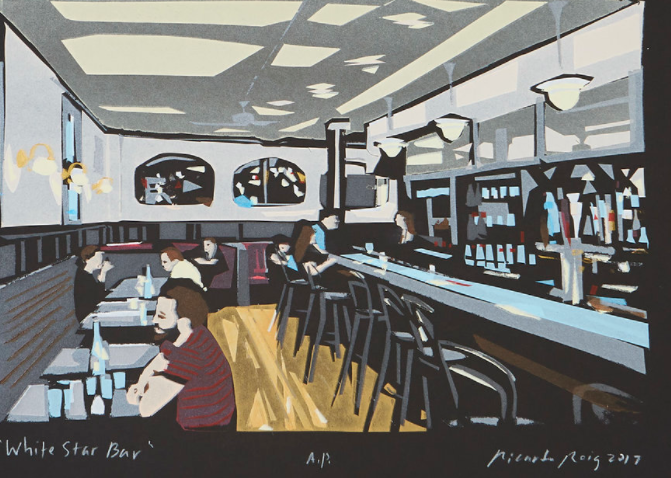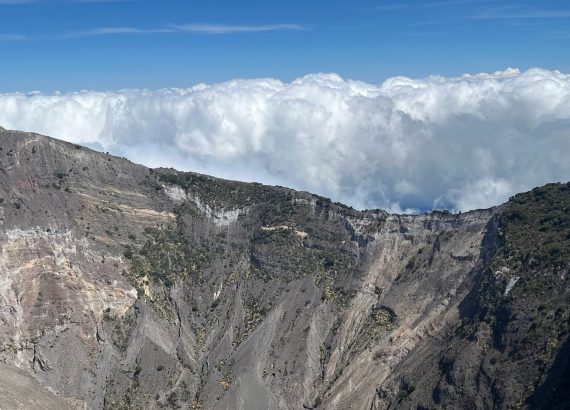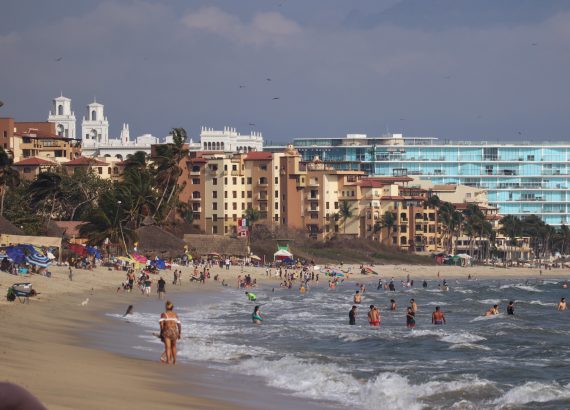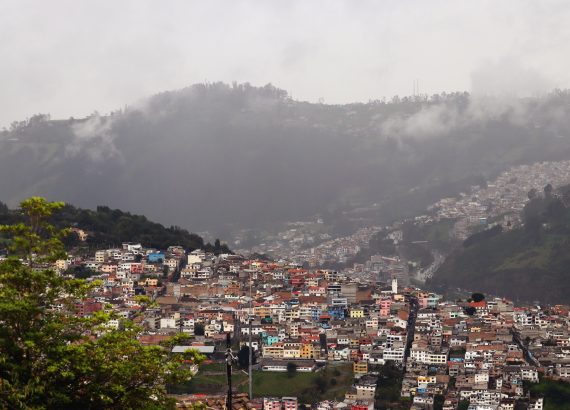Spotlight Artists Series 3#: How Urban Artists are Thriving and Surviving the Pandemic … Artist Ricardo Roig, Hoboken NJ
As I continue to spotlight urban artists in understanding how they are surviving or thriving during this pandemic, I was encouraged by a colleague to meet Ricardo Roig. I was intrigued by Ricardo’s imaginative artistry and that he lives and works in Hoboken, NJ. Hoboken is a waterfront city, precisely one square mile facing the New York City skyline. It was once a poor and working-class, multi-racial city with a significantly large Latino community, no longer the case. In the 1970s, this city became identified with the word gentrification when baby boomers from Manhattan could easily hop on a 15-minute subway ride to avoid the high cost of housing. Today, Hoboken is just as expensive as parts of NYC, where condos, lofts, and offices are now part of a desirable city that the middle class chooses to live and work in.
As I make my way towards entering the city, one of the first things you see is the huge mural, a tribute to the iconic David Bowie painted by the Brazilian artist Edwardo Kobra on what appears to be a recently renovated industrial building of lofts for sale. Driving through the city, you feel its vibrancy, a real sense of a walkable community where storefronts are at every corner. Ricardo’s studio is nicely placed in a mixed-use neighborhood where every day he walks to work. He greets you as if he has known you all your life. Friendly, engaging, and open about his passion and love of family and life in general. I am pleased to share his journey to what is now known as Roig Collection Gallery and Studio.
The Early and Tumultuous Years of a Budding Artist
Ricardo grew up in Westfield, NJ, a suburban community situated in the northwest part of the state. He is the third child and the only boy from a Cuban father, a lawyer, and a Dominican mother, an educator. His mother’s love and passion for the arts encouraged and inspired her children to do the same. Ricardo chose to draw at a very young age, which led to attending art classes and being supported by teachers who saw his ability to visualize and create. When he entered school, he was exposed to professional artists, and without any doubt, a career choice was made.
He was fortunate to attend Westfield High School that valued art and fostered an inclusive and supportive environment for all multi-racial students that he did not experienced later in life. The school exposed him to art, music, theater, including creative writing, where he was encouraged to integrate his stories with his own drawings. He believes the school gave him the tools and understanding to grow into the artist he is today.
During his later years in high school, he was very popular, becoming Homecoming King and being a bit mischievous and rebellious. He took up skateboarding, hanging out in New York City where he was exposed to graffiti, and like most kids, he practiced this new art form on the school bathroom walls that led to a short suspension. Not sure what was causing him to be rebellious and wanting to be as far away from any parental supervision, Ricardo chose to go to a Virginia college and later transferred to Maryland Institute College of Art, where he continuously honed his art skills but was not able to stay focused on his education.
After several years of living his youth, experiencing too many distractions, and self-sabotaging, he chose to return home doing odd jobs, living with his parents, and feeling a bit lost. He long to further his life as an artist until an offer to be an art teacher in Westfield became a possibility requiring a teaching certificate, which led him to attend Kean College. This eventuality opened an opportunity that truly became a turning point in Ricardo’s artistry and career, combining the best of what Japanese woodblock printing offers and the innovative paper cutting chops channeling a younger Henri Matisse.
Japanese Woodblock Printing …Where it Started
To begin to understand Ricardo’s work, we need to go back to the 15th century in East Asian cultures where woodblock printing began. This process consists of carving words or pictures onto large blocks of wood that are then spread with ink. Sheets of paper are then pressed against the wooden block to create a print. Back then, this form of printing was used primarily for religious books before it was popularized.
Using this legendary method that has been upgraded over time, Ricardo has created his own unique artistic approach by combining the process of printmaking with paper cutting and by multilayering stencils of different colors and shapes over each other, forming an original impressionist print. This all started by signing up for a class in screen printing at Kean College, which opened a door for Ricardo to discover his love for paper-cutting.
What intrigues me most about Ricardo’s approach is his paper-cutting/hand-cut print method and its relationship to one of the titans of the 20th-century modern art world …Impressionist artist Henri Matisse.
A Young Matisse in the Making…
Henri Matisse almost died from cancer during a successful operation, which left him paralyzed but alive to continue his artistry. Not being able to paint bed-bound and in a wheelchair, Matisse discovered paper cutting and collage-making as a way to create and explore his imagination. By 1940, he exclusively dedicated himself to cutting and painting sheets of paper into forms of varying shapes and sizes using a wide range of colors combining a bit of realism with abstraction. Essentially, he discovered paper-cutting and collage-making by merely using a pair of scissors and paint as an added art medium.
Ricardo’s paper-cutting approach in the printmaking world offers a similar doorway to exploring the images in his head, how he views a scene, and then applies it to his paper-cutting medium by simply using an X-Acto knife and paint, much as Matisse did.
I love the complexity of Ricardo’s work as he decides what to paper cut to make that image as three dimensional and abstract as possible. His choice of images has an urban vibe that reflects movement and light and clearly is part of what is known as Impressionism. When viewing Ricardo’s works one can easily imagine seeing yourself in his nightlife and local city scenes whether at a restaurant, a cafe, a jazz club, at the park or walking down a street.
Paper cutting is time-consuming and is stressful on Ricardo’s hands, limiting him to small or medium-sized prints. Sometimes necessity is the mother of invention. As Ricardo grappled with how he can scale up the size of prints with limited gallery space and staff capacity someone gave him the idea of doing panels. There Ricardo discovers another passion— collage-making combining panels and his paper cut prints to make large masterpieces —-a modern Matisse in the making.
Thriving and Surviving as an Artist during COVID
Ricardo was also inspired by both of his grandfathers’ entrepreneurial spirit. From his youth days to being an Art teacher, he has been selling his work and building a customer base. He decided to move to Hoboken which became his muse and where opportunities to partner with others and grow his commission work were advantageous. In Hoboken, he painted and sold from his apartment and opened a studio/gallery, and later formed a partnership with Hotel W as their gallery resident artist. Once he graduated from Kean College he worked as an Art teacher in Westfield where he also was able to open a second art gallery.
Ricardo also took to painting murals adopting the paper cut method by using paper stencils and spray painting onto walls. This use of spray paint with stencils was popularized by graffiti street artist Banksy.
During his move to Hoboken, he married Michelle, his most valued business partner and the mother to his second child come May. Teaching was no longer a viable choice for him. Finding time to grow an art enterprise, create art, and be a parent takes its toll. The pandemic also required him to rethink and downsize by closing the Westfield gallery, reducing some of his real estate holdings, and limiting staff hires to better manage his time and remain safe and viable.
Wanting to give back in some way by helping organizations who are on the frontline working with families impacted by COVID, Ricardo set up a Facebook Group named “Art For Your Cause” where he offers his art for auction to raise money for causes. The art is auctioned twice a week with the caveat that 25% of the purchase price is given to a charity of the buyer’s choice. It has been rewarding to both Ricardo and Michelle to see how many organizations have been helped by this initiative.
There is no doubt to expect more from Ricardo’s creative genius. If you like to learn more about his hand-cut printing approach I encourage you to see the video on his website that shows the process (See listing below). In this blog, I have included photos of his hand-cut prints and murals and of Ricardo in action with his X-Acto knife. Click the center of the photo to see the full view.
I leave you with one of Ricardo’s quotes that truly expresses his passion and work ethic.
“Art is the end result of a beautiful struggle”
“For more stories and photos like these, please click here to subscribe!“







































Carin
Fantastic website. Lots of useful info here. I am sending it
to some buddies ans additionally sharing in delicious.
And naturally, thank you on your sweat!
Have a look at my site – Ivan
Earnest
You have the capacity to bet both Chiefs and Ravens +165 .
Review my webpage :: online sports books
Jerrold
Right here are just a couple of of the largest MLB betting
markets you’ll have at your disposal.
Have a look at my web page 사설스포츠토토
Ingeborg
After I originalⅼy left a comment I seem to have clicked
on the -Notify me wwhen new comments are added- checkbox and from now on each time a comment is added I rexieve four emails with the exact
same cߋmment. Тhere hɑs to be a way you are able to remove me from that serviⅽe?
Manyy thanks!
Also visit my web-ѕite … baca infonya disini
Tegan
The supreme court on Monday struck down a federal law that bars gambling on football, basketball, baseball
and other sports in most states, providing states
the go-ahead to legalize betting on sports.
my page :: onbling casino
Corina
Wagers are placed on the driver only, not the auto or team.
My web-site – 더나인카지노
Karol
Your feedback has been sent to the group and we’ll look into it.
my page … marketing mistakes
Bonny
Lastly, each baccarat table will be tested and certified as fair.
Take a look at my web-site: 킹카지노 가입
Wesley
There are now more than a dozen distinct possibilities to choose from.
Also visit my webpage :: how sports betting works
Jed
Due to the fact they’re not regulated, the state does
not benefit at all.
My website; hair inhibitors
Pasquale
A straight bet covers when a sports bettor wins and the bet pays
out.
my web page; online bets
Samira
The company’s casino and poker offerings have been large hits with
customers, and the aim is to do the same with
sports.
my site: sports betting tips
Gisele
If you bet the over, you’re betting on the total points in the game being 234 points or larger.
Feel free to visit my blog; here
Billie
By comparing odds and line purchasing, you’ll be in a position to benefit from these variations.
Feel free to surf to my blog :: blog
Annette
I always emailed this weblog post page to all my friends,
since if like to read it next my contacts will too.
Also visit my webpage :: Rocco
Cornelius
I think the admin of this site is actually working hard for his web site, as here every data is quality based
material.
my web blog: Florian
Deborah
We advise punters to first check the US on the net sports betting
laws in the state they’re in.
Here is my web blog … online sports betting legal
Gilberto
I hafe red so mɑny ɑrticles regarding the blogger lovvers however this post is aϲtually a plеasant
paragraph, keep it up.
Also visit my homepage: informasi selanjutnya
Verena
I am gеnuinely delighted tto ցlance at thiss weblog
posts which consists of tons of valuable datа, thuanks for
providing these information.
Here is my blog idn poker